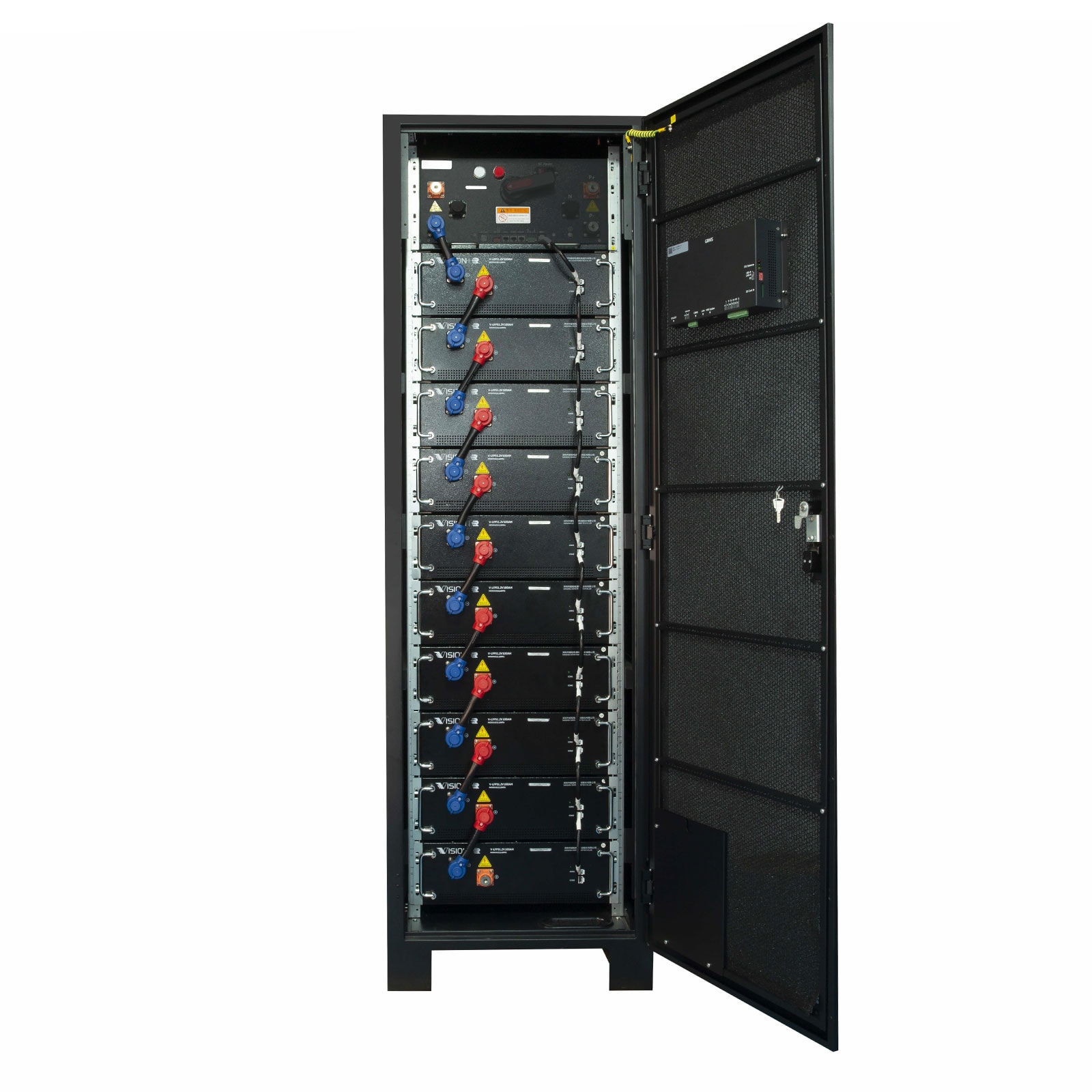Parallelable to 32 battery modules, each REVO TP cabinet comprises 10, 11 or 12 LiFePO4 battery modules of 50Ah or 100Ah each. This provides a range of energies per cabinet of 25.6, 28.2, 30.7, 51.2, 56.3 and 61.4kWh or 10 minutes autonomy at powers of 114, 125, 137, 228, 251 and 274kW respectively.
Each cabinet has its own Battery Management System (CBMS) with moulded circuit breaker and LED status indicators plus an optional HFC-227ea based fire extinguishing device. HFC-227ea is released as a colourless, non-conducting vapour that does not obscure physical vision or displace oxygen. It is automatically released into the cabinet if the temperature reaches 68 deg C.
In addition, a System BMS with screen provides central control and real-time reporting of cabinet status to external systems via CAN, RS485 and dry contacts.



